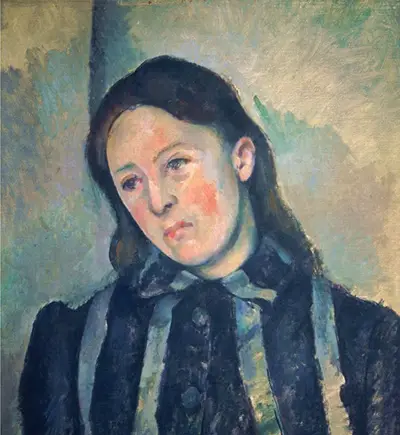Portrait of Madame Cezanne with Loosened Hair is one of many paintings by Cezanne that depict his wife - a favourite theme in his work, as countless art historians have noticed.
In stylistic terms, it sits somewhere between Cezanne at his more naturalistic and Cezanne at his more abstract. It shows the loose, sometimes haphazard strokes associated with impressionism, and yet at the same time the details are sufficiently defined for Madame Cezanne's face - and the emotions that it conveys - to come through sharply.
The painting exists at a perfect nexus between the more subjective side of post-impressionism - showing concern with depicting emotion through abstraction, a cause that would later be taken up by the expressionist movement of the early twentieth century - and the naturalism that characterised art of the nineteenth century.
No art lover could fail to admire the work of Paul Cezanne, offering as it does a fascinating insight as to how the art world was shifting as the nineteenth century gave way to the twentieth.
Portrait of Madame Cezanne with Loosened Hair, with its emotional currents that can be felt just below the surface, is a prime example of Paul Cezanne at his best - and at his most intriguing. Who could turn down the opportunity to have such a work of art proudly on display in their own home?
Paul Cezanne must surely rank as one of the most iconic painters in all of art history. As a major player in the post-impressionist movement, Cezanne had a key role in helping to take the aesthetics of nineteenth-century impressionism and adapt them for the new era that was dawning: the twentieth century.
Cezanne's artwork varied in terms of aesthetic style. Some of his paintings are relatively naturalistic, with the influence of the earlier impressionist movement being obscured by an emphasis on realism.
Others, on the other hand, are far more stylised, sometimes even fantastic. With his latter works, Cezanne was taking part in the wider post-impressionist concern with moving away from naturalism and towards a fuller embrace of the abstract and the subjective.




